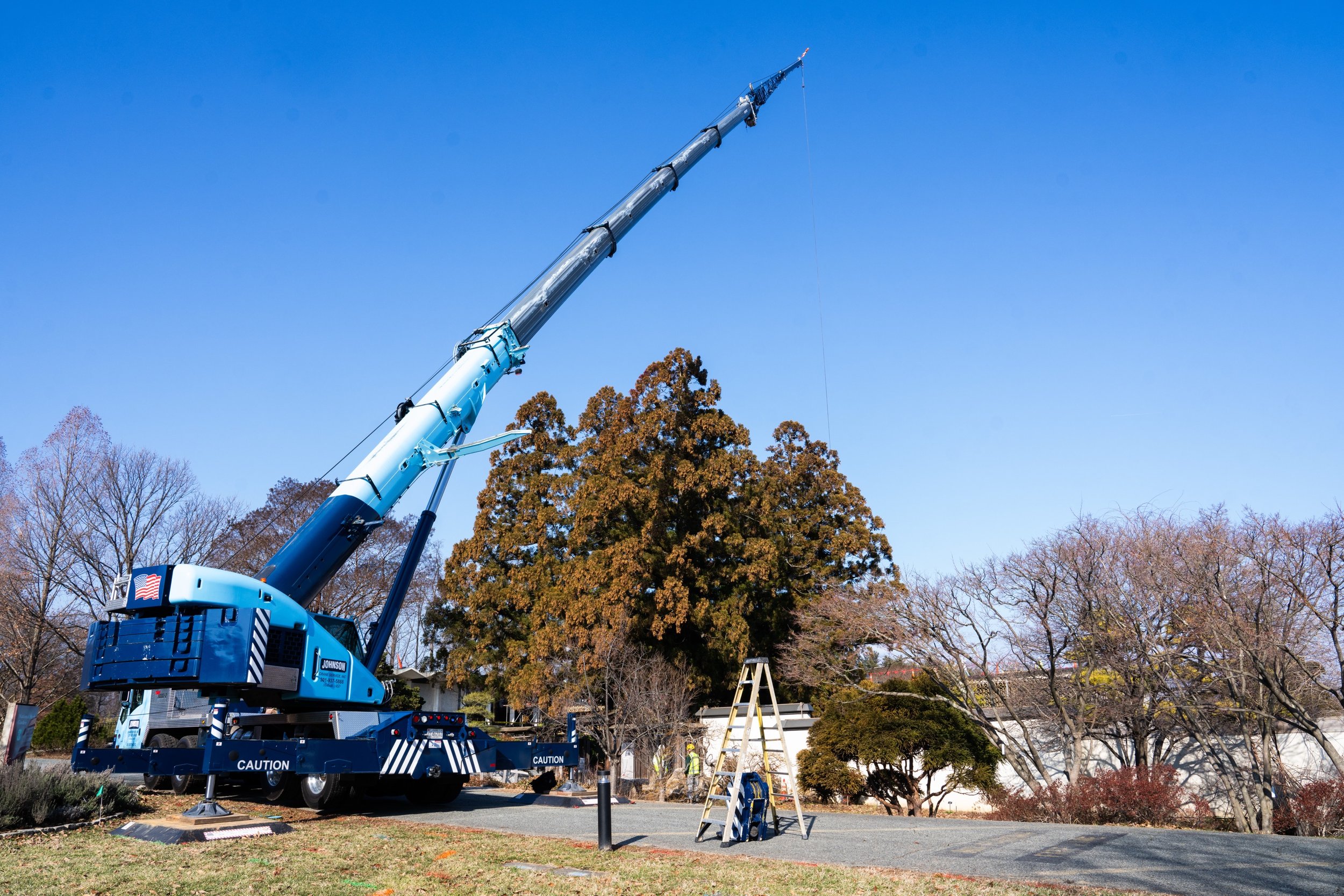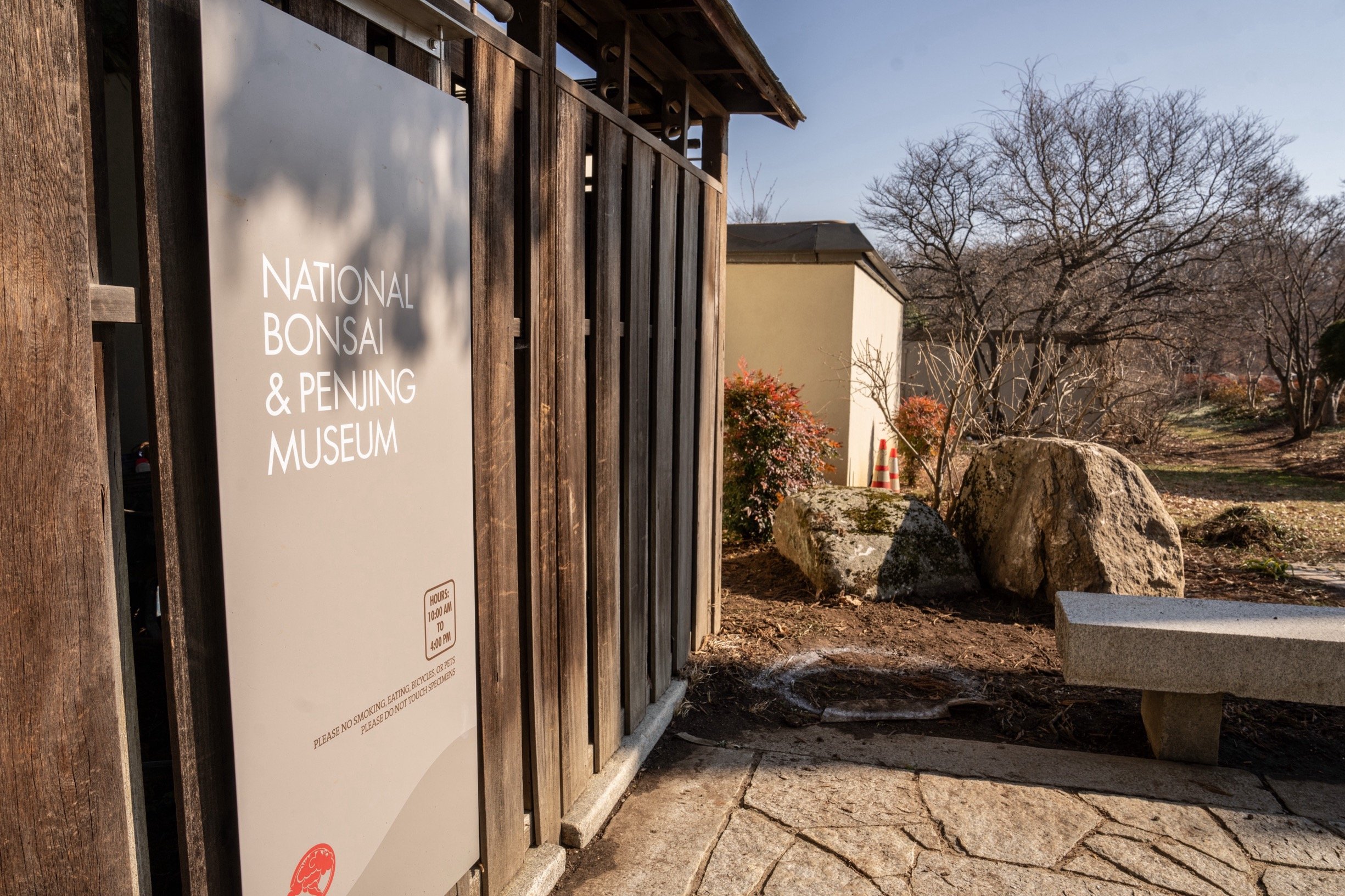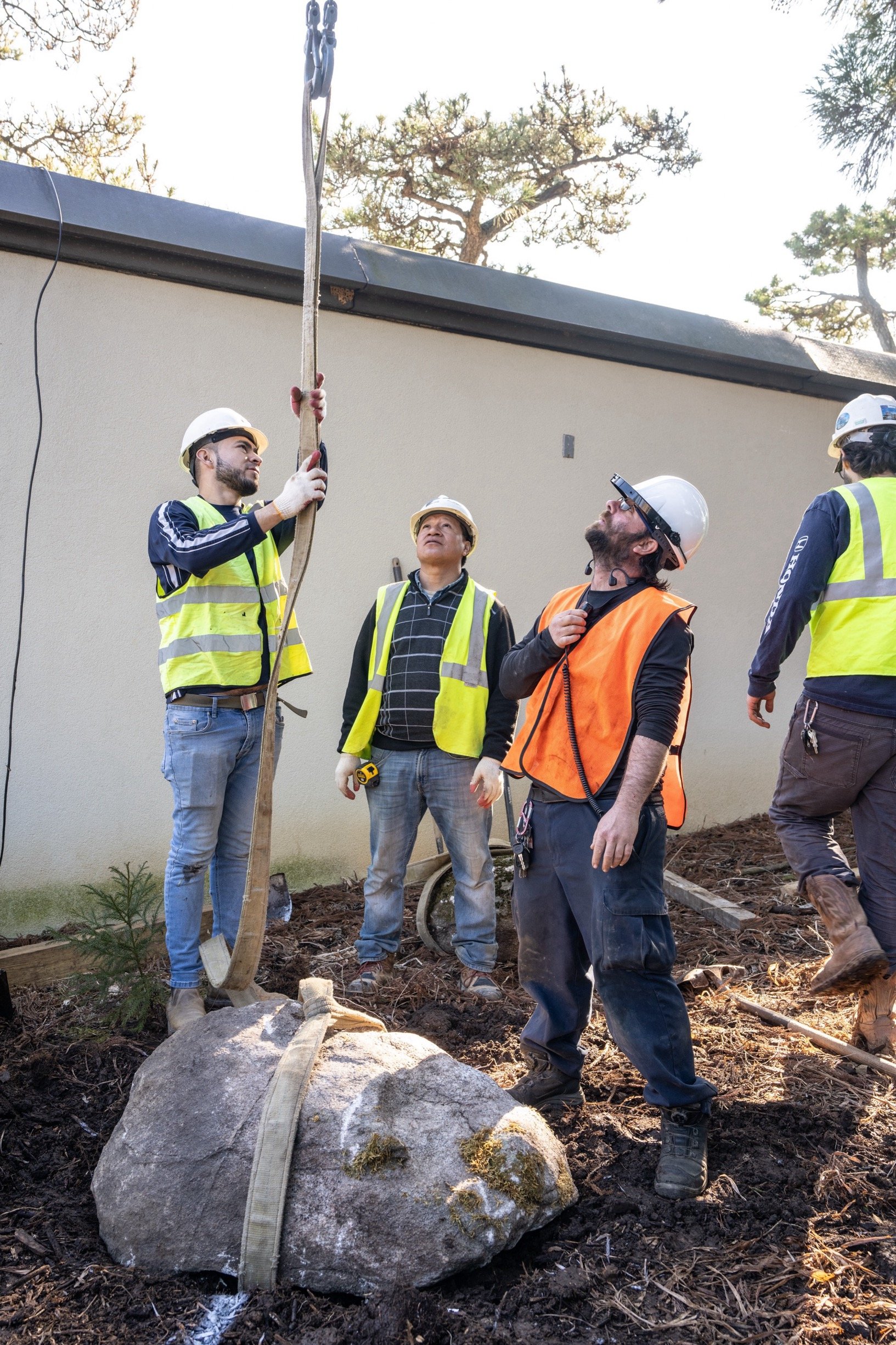Next year marks the National Bonsai & Penjing Museum’s 50th anniversary! The museum was founded in recognition of the gift of 53 bonsai from the country of Japan to the people of the United States to commemorate our country’s bicentennial. Since then, additional collections have been added, pavilions have been built, and gardens have been planted to create an environment worthy of displaying these and many more national treasures. In preparation for the anniversary, the U.S. National Arboretum’s Public Horticulture and Engagement Unit has begun renovating the museum’s entrance and Japanese Stroll Garden.
Gardens are like bonsai, in that they are always changing and never finished. They both contain microclimates within microclimates. An area that was once in full sun may turn to shade and vice versa. A fifty-year-old focal branch can wither if the crown above isn’t thinned. The Cryptomeria Walk and Stroll Garden have both gone through major changes. Plants have been removed over time due to too much and not enough light.
The garden just inside the Museum’s front gate is known as the Cryptomeria Walk. The intent of its original design was to give visitors the feeling of walking through a forest in preparation for the scaled down versions of nature within. The shady understory was planted with wild-collected specimens from the explorations of past U.S. National Arboretum director John Creech. Many of these were released into the nursery trade as representatives of the Arboretum’s Elite Plant Collection.
A 2025 sketch of the plan for the renovated garden by Museum Curator Michael James.
After selecting and digging up the plants that needed to be saved for the final planting, granite boulders were incorporated into the landscape. Rob Page, of Page Stonework and Landscape, handpicked over 30 of these large stones from New England. Due to the size of the boulders, some of which weighed nearly 5000 lbs., and lack of accessibility for equipment, a crane was utilized for their installation. They have given the gardens an instant feeling of age, with remnants of glacial erratics providing a sense of a geological timescale.
On the hillside directly below the Directors conference room and office, a group of Arboretum staff changed the topography to shape a stoney riverbed that flows through hills evocative of the Blueridge mountains. This effect will be reinforced by future plantings of shrubs that will be shaped into mounds by shearing. Two mounds of soil at the top of the hill will be planted with groves of Virginia Pines that will be pruned with a forced perspective to evoke the feeling of seeing them from a great distance.
The plantings of trees, shrubs, and herbaceous perennials will begin this spring, so the garden will have time to establish a full season of plant material before next year’s 50th anniversary. The garden will continue to evolve, as the training and growth of the plants will have just begun. We are excited to watch the garden’s development for many years to come.





















